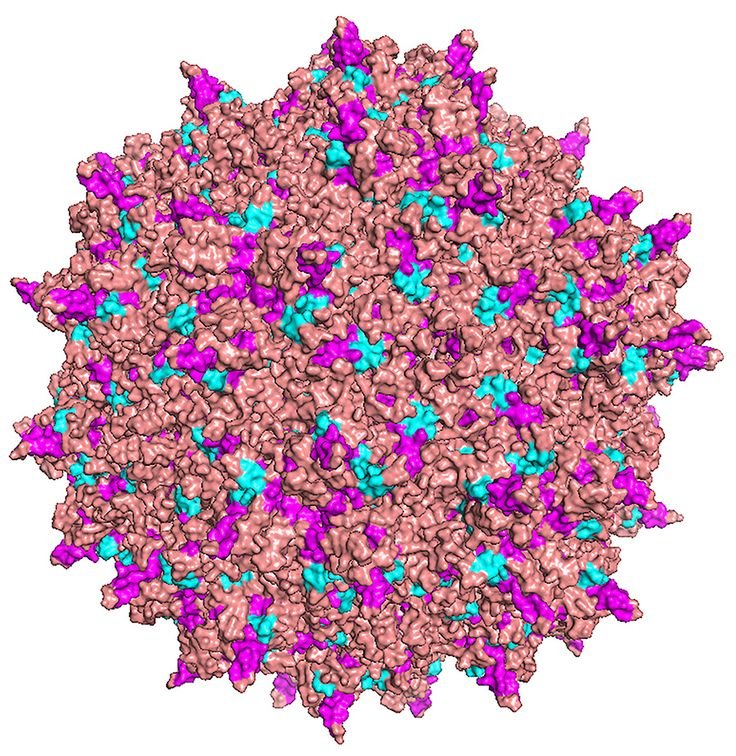
Introduction to Adeno-Associated Virus (AAV)
History and Discovery
The Adeno-Associated Virus (AAV) is a small, non-enveloped virus that has gained significant attention in recent years for its potential applications in gene therapy. Discovered in 1965 as a contaminant in adenovirus preparations, AAV was initially considered non-pathogenic. However, further research unveiled its unique ability to insert genetic material into the host cell’s genome without causing severe disease, making it a promising tool for gene delivery.
Structure and Characteristics
AAV is a member of the Parvoviridae family, with a simple single-stranded DNA genome. Its capsid structure is made up of three proteins, VP1, VP2, and VP3, which protect the viral genome and facilitate cell entry. AAV has a broad host tropism, infecting both dividing and non-dividing cells in various tissues. Due to its ability to establish long-term gene expression without integrating into the host genome, AAV vectors have become a popular choice for gene therapy applications.
Types of Adeno-Associated Virus
To further understand the Adeno-Associated Virus (AAV), it is crucial to explore its different types, known as serotypes and capsid variants.
Serotypes
AAV comprises a diverse group of serotypes, each with unique properties that affect its tropism and efficiency in gene delivery. Serotype selection plays a crucial role in determining the target cell types and tissues for gene therapy applications. Researchers have identified numerous AAV serotypes, such as AAV1, AAV2, AAV5, and more, each with varying transduction efficiencies and tissue specificities.
Capsid Variants
Apart from serotypes, AAV exhibits capsid variants that influence its interactions with host cells and immune responses. Capsid engineering has enabled the development of modified AAV vectors with enhanced capabilities, including evasion of neutralizing antibodies and improved transduction efficiency. Understanding the diverse capsid variants of AAV is essential for optimizing gene therapy strategies and improving the safety and efficacy of gene delivery systems.
Role of Adeno-Associated Virus in Gene Therapy
To comprehend the significant role of the Adeno-Associated Virus (AAV) in gene therapy, it is essential to delve into its various functions beyond serotypes and capsid variants. AAV has gained prominence in gene therapy due to its ability to efficiently deliver therapeutic genes into target cells. This unique characteristic has paved the way for numerous gene delivery mechanisms, making AAV a valuable tool in the field of genetic medicine.
Gene Delivery Mechanisms
Gene Delivery Mechanisms:AAV utilizes a sophisticated mechanism to infect host cells and deliver genetic material. Once inside the cell, the AAV genome integrates into the host DNA, allowing for sustained gene expression. This mechanism ensures long-term therapeutic benefits and has revolutionized the treatment of genetic disorders.
Applications in Medical Research
Applications in Medical Research:The versatility of AAV extends to its wide range of applications in medical research. From correcting genetic mutations to delivering therapeutic genes for various diseases, AAV has shown immense potential in advancing medical treatments. Researchers are continually exploring new ways to harness the power of AAV for innovative gene therapy solutions, making it a pivotal player in the realm of genetic medicine.
Risks and Challenges Associated with Adeno-Associated Virus
Diving deeper into the realm of gene therapy, it is crucial to acknowledge the risks and challenges associated with the Adeno-Associated Virus (AAV). While AAV has showcased remarkable potential in gene delivery mechanisms and medical research applications, certain factors warrant consideration for its safe and effective use in therapeutic interventions.
Immunogenicity:
One primary concern surrounding the use of AAV in gene therapy is its potential to trigger immune responses in recipients. The body may recognize AAV as a foreign invader, leading to the activation of immune cells and subsequent clearance of AAV vectors. Strategies to mitigate immunogenicity, such as immune suppression or capsid engineering, are actively being researched to enhance the safety and efficacy of AAV-based therapies.
Insertional Mutagenesis:
Another risk associated with AAV gene therapy is the possibility of insertional mutagenesis, where the integration of AAV DNA into the host genome may disrupt normal gene function or lead to unintended genetic alterations. It is vital to carefully evaluate the genotoxicity of AAV vectors and consider potential long-term implications to ensure the safe and sustainable use of AAV in gene therapy applications.
Also Read: Cutting-Edge AAV Gene Therapy for Genetic Disorders
Current Research and Developments with Adeno-Associated Virus
Delving further into the realm of gene therapy, ongoing research and advancements are actively working towards optimizing the utilization of Adeno-Associated Virus (AAV) in therapeutic applications. Scientists and medical experts are continually striving to address the challenges associated with AAV gene delivery, such as immunogenicity and insertional mutagenesis, to enhance its safety and efficacy.
Enhancing Vector Efficiency:
Researchers are exploring innovative methods to enhance the efficiency of AAV vectors in delivering genetic material to target cells. By improving vector design, cargo capacity, and tissue specificity, scientists aim to maximize the therapeutic potential of AAV-based gene therapy while minimizing immune responses and adverse effects.
Targeted Gene Editing:
Another area of focus is the development of targeted gene editing techniques using AAV vectors. By harnessing tools like CRISPR-Cas9, researchers are working towards precise genetic modifications to correct defective genes or introduce therapeutic genes with high specificity. This approach holds significant promise for treating genetic disorders with a tailored and precise genetic intervention strategy.
